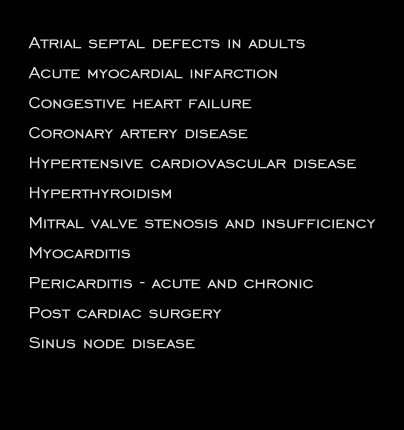The frequency of atrial fibrillation in the general population increases with age and may occur in the absence of other evidence of cardiac disease. However, it also occurs in association with, and/or is caused by, a variety of cardiovascular diseases, some of which are listed here.

